
The following article by David Strange was originally published on 10 Apr 2016.
If you drive through Shepherdsville and over the Salt River Bridge, you might think nothing of it. Oh, you might happen to glance over and catch a quick glimpse of the river as you rush along your way. If you take the time, you might see a couple of stork-like herons wading the waters in the distance when the river is low. When the river is high, your attention might be drawn to the ferocity of the deep, fast-moving waters.
But most people look straight ahead, barely even aware of the perfectly ordinary bridge or the little river below it as they drive busily to where they are going.
Oh, but there is a lot of history to this crossing!
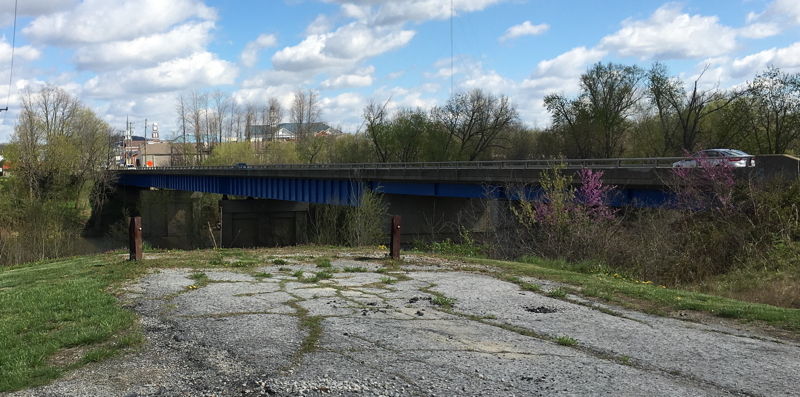
Completed in 1962, this current bridge is a simple concrete-on-I-beam span. But notice the oddity of elevation of the bridge roadway, suddenly jumping in height above the normal road level. That is the result of an error and the strong woman who got it corrected. You see, when the bridge was first designed, engineers failed to pay enough attention to the flood-level of the river. They simply designed the bridge floor to be the same height as the previous one. But this bridge design used huge I-beams under the bridge to support the structure, rather than the overhead suspension of the previous bridge. County Circuit Clerk Nancy Strange (no relation) realized that those low-hanging I-beams would in effect make the bridge a dam in flood times. Nancy pressed hard and got the state to raise the bridge to compensate, thus solving a potentially disastrous problem, but creating the unusual road height that you see today.
There is also so much more to see, looking at this crossing, especially in the historian's eye.
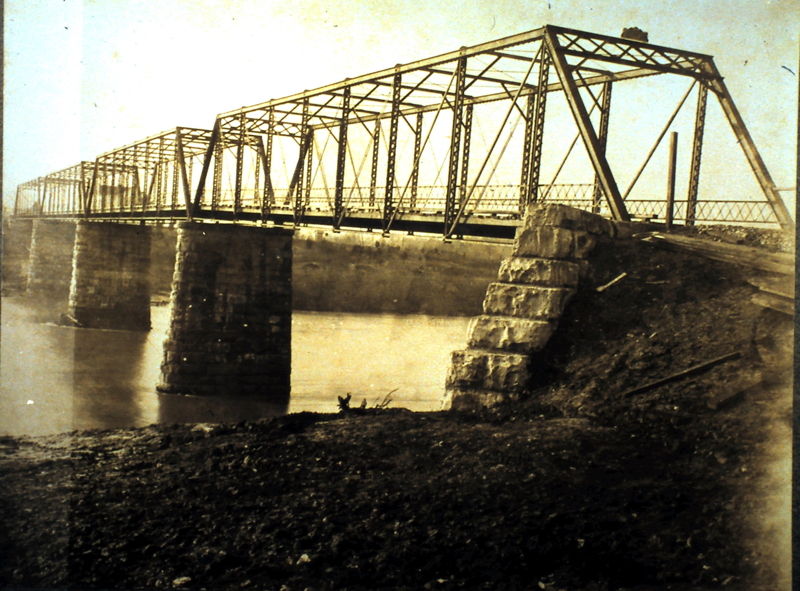
In 1862, during the Civil War, Confederate cavalry crossed this way, as well as thousands of Union troops. But don't imagine them crossing a bridge. They had to ford the river, or use a small ferry that operated nearby. The first bridge built here was in 1906.
And that is where this story really starts. The 1906 bridge was an iron-beam truss bridge with a wooden floor. It served its purpose for many years, but it was always a little shaky, especially as larger cars and trucks came along. Particularly in its later years, people remember how its floor moved as you crossed, and how the whole bridge would shake. I myself remember my Dad being nervous about driving across its narrow, shifting wooden planks.
The bridge started off with a tragedy on Thanksgiving Day 1906, when just one week after it opened, 15-year-old Addie Bridwell fell off the bridge and drowned while playing dare with her friends.
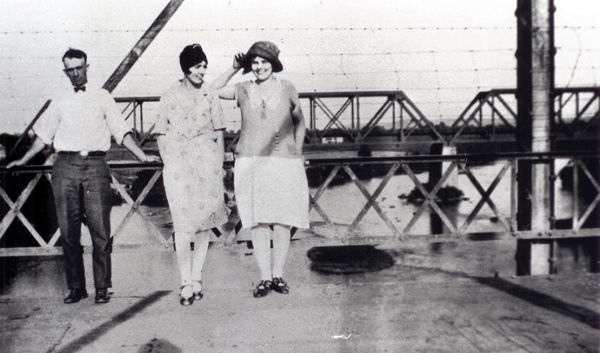
But there is amusing history here as well. A friend whom I will not name tells me that when he was young, several town boys created a clubhouse under the bridge crosswalk near the shore. A prime reason for the location was a gap in the flooring at that spot, where the boys could look up and get a thrilling glimpse under the girls' dresses as they crossed above!
I don't know if she was one of those girls, but Pat Crigler remembers walking over that bridge. "It was scary," she says. "The floor was wood and some of the planks were missing here and there. The walkway on the side of the bridge, you could feel the movement from the traffic going back and forth."
A lot of people still remember that shaky old walkway that had been added, apparently not very well, to the bridge. Mary Ellen Peterson commented to me, "I think I just figured out why I'm terrified of bridges! I took piano lessons from Miss Dorothy, so once a week I was faced with walking across the bridge. I think I held my breath for the entire time!"
Michael Robison tells me, "The last several years the bridge was in use, and during construction of the new bridge built just to the east of it, engineers deemed the structure was failing and allowed only one-way traffic to be on it at a time. Traffic lights were placed at either end and only one direction at a time was allowed on the bridge."
I have heard that fights broke out on the bridge, before the traffic lights, when cars would come from both ends and meet in the middle. With neither driver willing to risk backing up on the narrow planks, the fight would be about who had to do so.
Mary Lynch Walden remembers that the old bridge got so bad that her school bus had to stop and have the students get off and walk across, then reload on the other side.
That old bridge, by the way, was named the Lincoln Pike Bridge, as part of a series of roadways at the time that were supposed to be related to the Lincoln's days in Kentucky. You can still see signs of where the old bridge once stood and the path the original road followed in the parking lot of Maraman/Billings funeral home.
The memories of this ancient crossing, where Highway 61 crosses the Salt River in Shepherdsville, floats through the air of the place as thick as the currents of the river. Can't you just imagine Confederate horsemen racing through the waters? Can't you just see those giggling boys under the bridge looking up at the girls, and can't you just hear the girls yelling down at them?
Memories are the stuff of life. The efficient concrete bridge of today moves modern traffic along as it should. But leave it to a rusty old bridge to move the heart.
Additional Photos
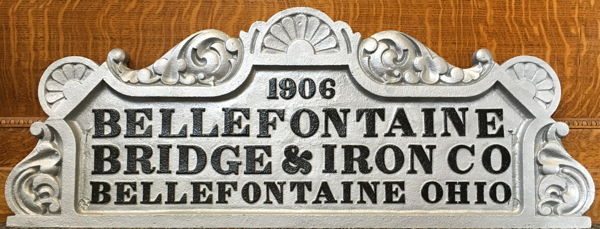
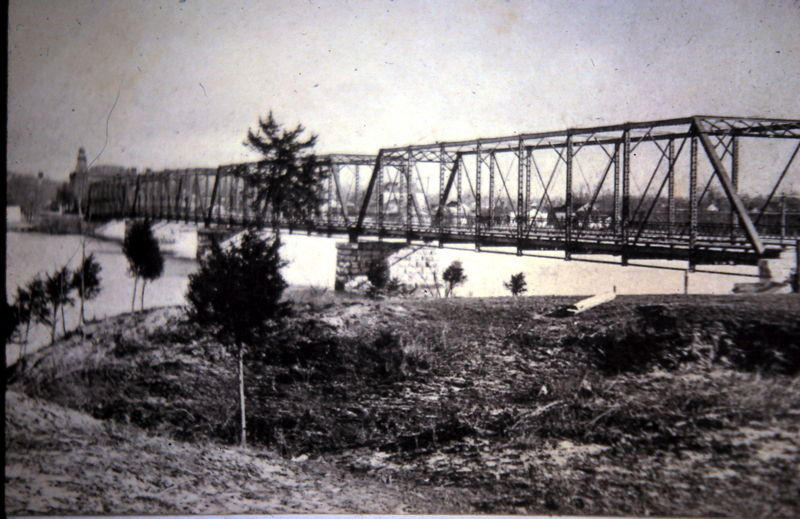
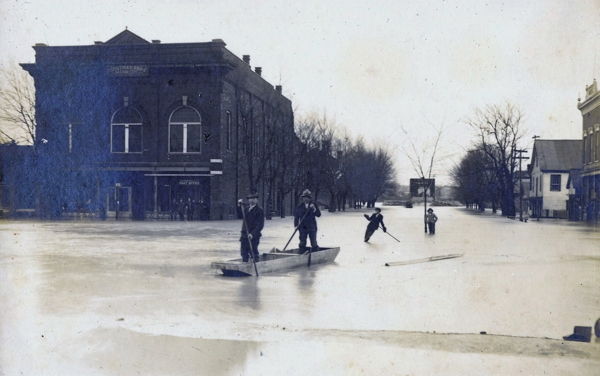
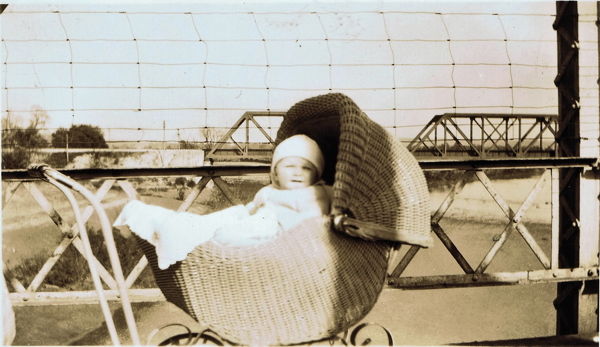
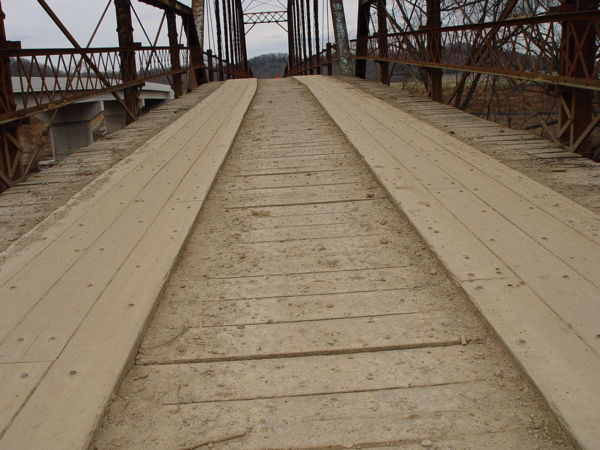
Copyright 2016 by David Strange, Shepherdsville KY. All rights are reserved. No part of the content of this page may be included in any format in any place without the written permission of the copyright holder.
The Bullitt County History Museum, a service of the Bullitt County Genealogical Society, is located in the county courthouse at 300 South Buckman Street (Highway 61) in Shepherdsville, Kentucky. The museum, along with its research room, is open 10 a.m. to 4 p.m. Monday through Friday. Saturday appointments are available by calling 502-921-0161 during our regular weekday hours. Admission is free. The museum, as part of the Bullitt County Genealogical Society, is a 501(c)3 tax exempt organization and is classified as a 509(a)2 public charity. Contributions and bequests are deductible under section 2055, 2106, or 2522 of the Internal Revenue Code. Page last modified: 12 Sep 2024 . Page URL: bullittcountyhistory.org/memories/shepbridge.html